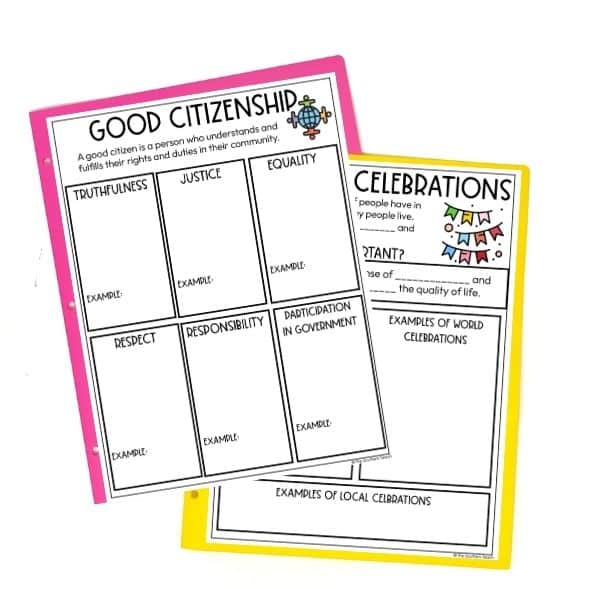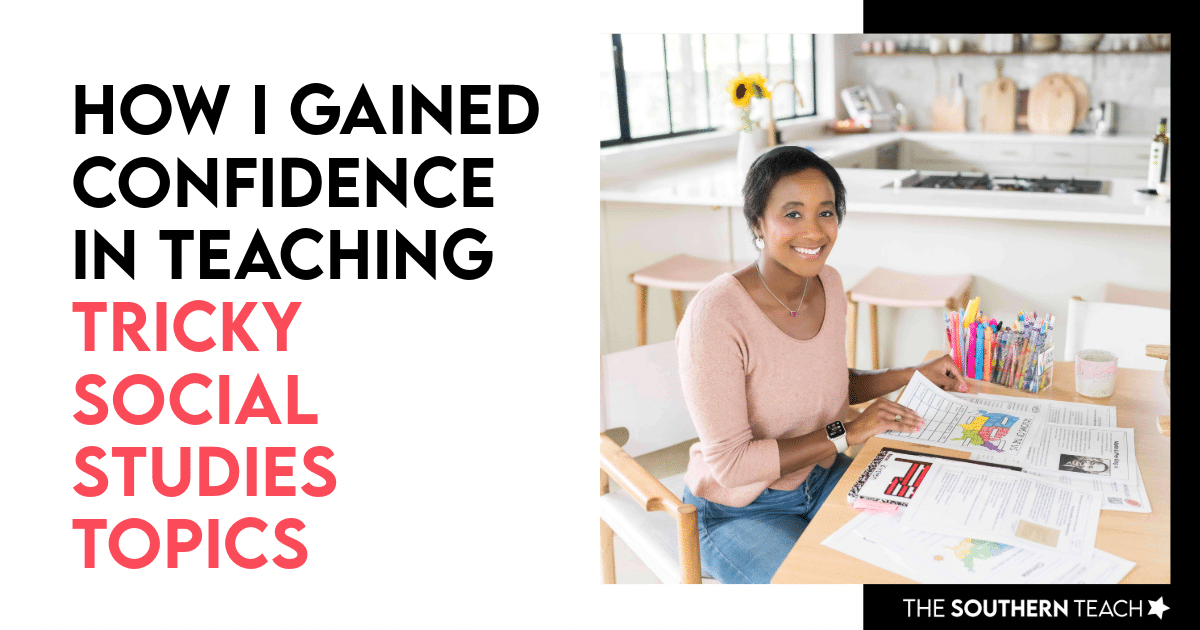How I Gained Confidence in Teaching Tricky Social Studies Topics
By Kirsten Hammond
Share This Post:
Do you have topics that you simply do not love to teach? Are these ones students tend to not enjoy? Or, are they ones that you struggled to understand in school and have negative memories of? There are so many reasons why educators do not enjoy teaching certain topics. However, it is crucial that teachers overcome this. This is why I am excited to share how I gained confidence in teaching tricky social studies topics. While the process was intimating and uncomfortable, it was essential for my students.
Overcoming the Fear of Tricky Social Studies Topics
If you’ve tried to overcome the fear of teaching tricky social studies topics, I am here to tell you it is possible! You can build the confidence to teach any social studies topic- even the ones you are not familiar with. By sharing how I gained confidence in teaching tricky social studies topics, I hope to empower you to approach tricky topics with confidence. You and your students can succeed- no matter the subject matter.
The Anxiety of Teaching What You Don’t Know
There were definitely moments in my early years of teaching when I’d look at the curriculum and think, “Oh no, I don’t feel confident teaching this.” Whether it was a topic I didn’t cover much in my own education, or something that felt unfamiliar, I was terrified of getting it wrong. That fear can be overwhelming, especially when we want to be the best educators we can for our students.
I also remember that feeling of panic that would bubble up. I would think, “What if I give them the wrong information?” I wasn’t just anxious about understanding the material myself. I was worried about the responsibility of shaping my students’ knowledge about important events and concepts. It’s a lot of pressure!
My mind also always went back to a year that I had a few VERY smart students reading well above grade level. There was also one who was politically aware and had his own beliefs about certain social studies topics. I was scared to teach a lesson and have them ask questions that I couldn’t answer.

How I Started Building Confidence
Over time, I realized that avoiding these tricky social studies topics wasn’t helping me or my students. I made a conscious decision to face the fear head-on. The first step for me was simply recognizing that it’s okay not to know everything. We’re human and part of being a great teacher is continuing to learn and grow. Once I gave myself permission to keep learning alongside my students, the pressure started to lift.
Specifically, I began to break down the process into smaller, manageable steps:
Step 1: Do Your Homework
- Before I introduced a topic to my students, I would spend time brushing up on the content myself. This could be through reading a teacher’s guide, watching a documentary, or even taking a quick course online. If there was a specific event I felt unsure about, I’d gather resources that simplified the material for me first.
Step 2: Find Reliable Resources
- There’s no shame in using teacher-friendly resources to support your lessons! I found some amazing websites, podcasts, and teaching platforms that broke down complex topics into clear, digestible lessons that I could bring into the classroom with confidence. I also relied on primary sources—letters, speeches, and firsthand accounts—which added authenticity to my lessons without needing me to be the expert on every detail.
Step 3: Be Open with Your Students
- One of the best strategies I learned was to be transparent with my students. If there was something I didn’t know, I wasn’t afraid to admit it. I’d say something like, “That’s a great question! Let’s explore it together.” This turned those tricky moments into teachable opportunities where students saw that learning is an ongoing process. It also took the pressure off of me to know everything upfront.

Building Confidence Over Time
As I began implementing these strategies, I noticed that my confidence grew over time. The more I worked with the material, the more comfortable I became. I also discovered that teaching these topics didn’t mean delivering a lecture where I had to know everything. Instead, I focused on facilitating discussions and guiding students in exploring the material together.
Sometimes, I’d design lessons around inquiry-based learning, where students would pose their own questions about a topic and research answers. This method shifted the focus away from me needing to be the sole source of information and allowed students to take ownership of their learning.

Practical Tips for Teaching Tough Topics
My experience on how I gained confidence in teaching tricky social studies topics is here to help you!
1. Start Small
If a topic feels overwhelming, start by breaking it down into smaller, bite-sized chunks. Teach one aspect at a time and don’t feel like you need to cover everything in one lesson.
2. Use Visual Aids
Visuals like timelines, maps, or graphic organizers can help both you and your students make sense of complicated information. They also make it easier to explain relationships between events or concepts.


3. Collaborate with Colleagues
Reach out to other teachers in your school or online communities. Chances are, they’ve dealt with similar challenges and can offer advice or share resources that have worked for them.
4. Turn Learning Into a Joint Effort
Remember, you don’t have to be the sole expert. Encourage students to ask questions, conduct research, and share their findings with the class. This creates a learning environment where everyone is working together to discover new things.
5. Emphasize Growth Over Perfection
Both you and your students are learning and growing. It’s okay to make mistakes and revisit topics as needed. The goal isn’t to be perfect—it’s to foster curiosity and critical thinking.
In the end, gaining confidence in teaching tricky social studies topics isn’t about becoming a walking encyclopedia. It’s about embracing a growth mindset and giving yourself the freedom to learn along the way. While it was hard to share how I gained confidence in teaching tricky social studies topics, I hope it inspires you to do the same.
kirsten hammond
Kirsten is a former 3rd and 5th grade teacher who loves helping upper elementary teachers by creating resources and sharing ideas that are engaging, research-based, and TEKS-aligned. She is a work-from-home mama of 3 rambunctious little ones and loves running, true crime, and lots of coffee.


















